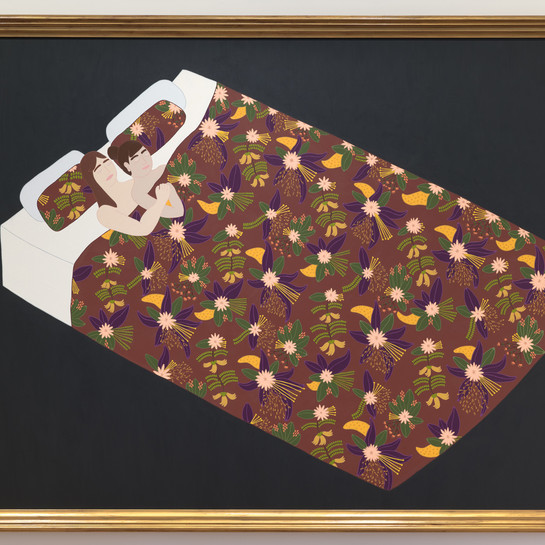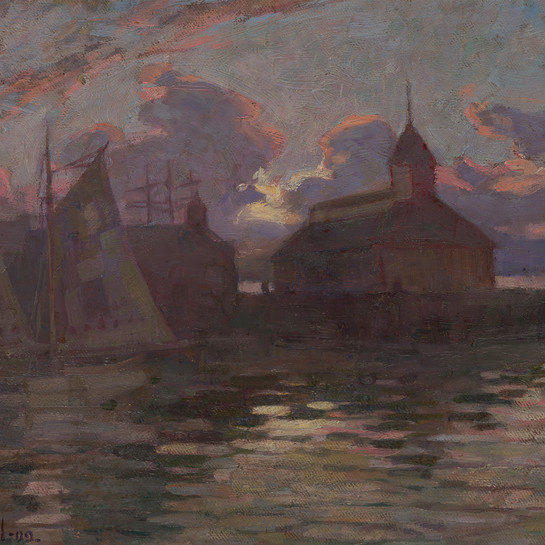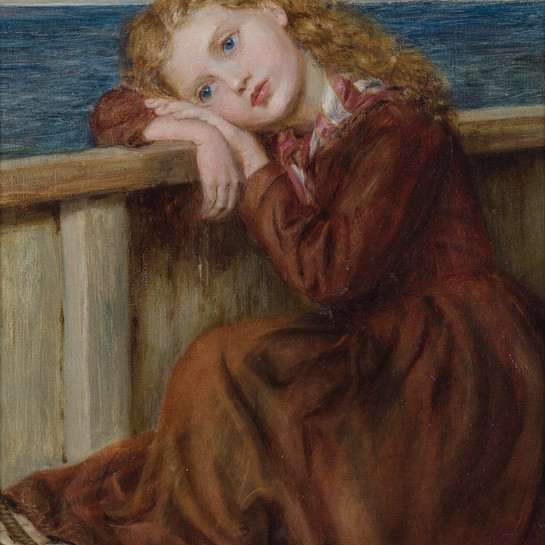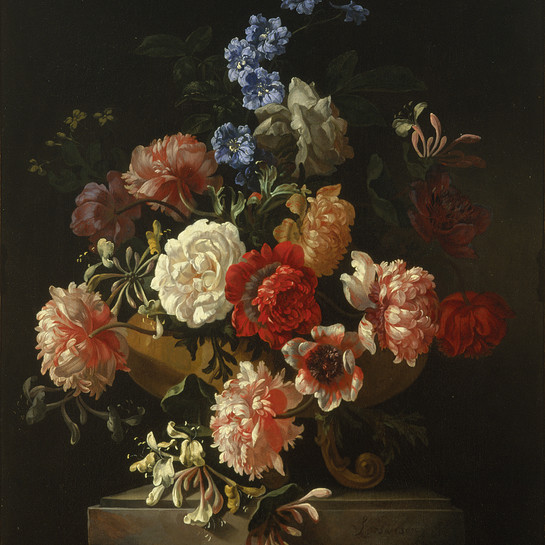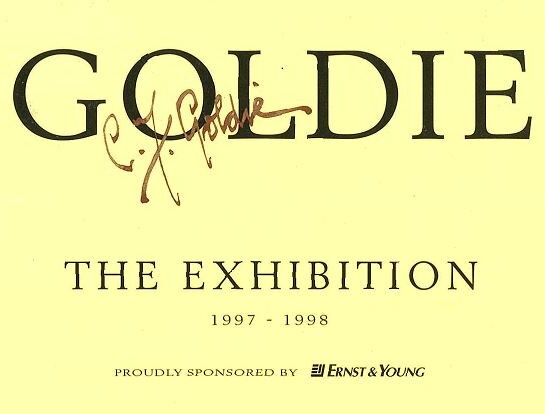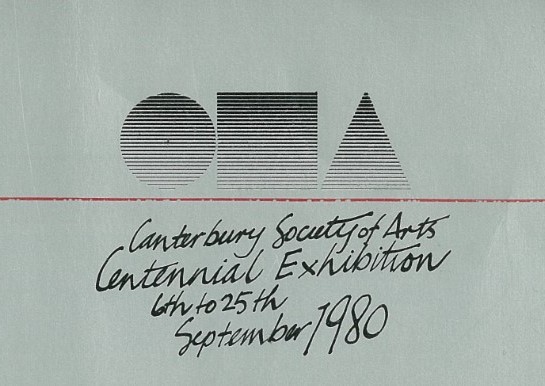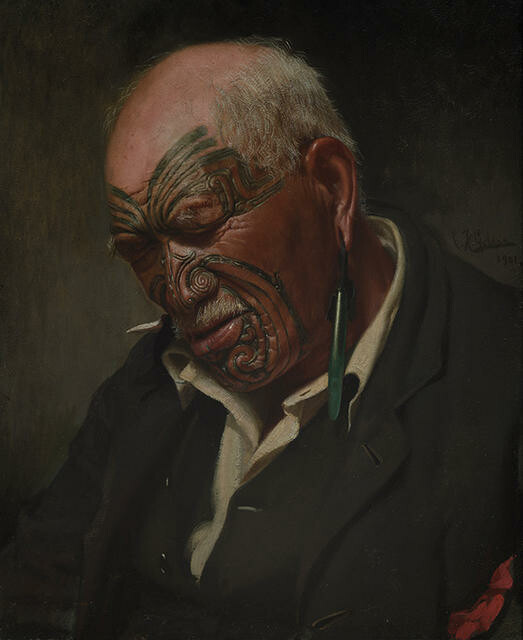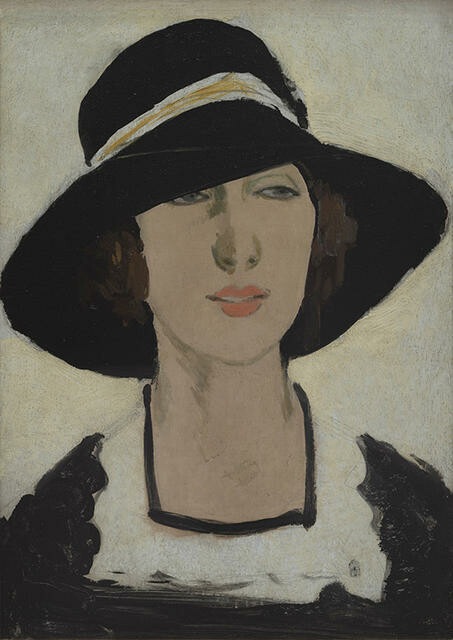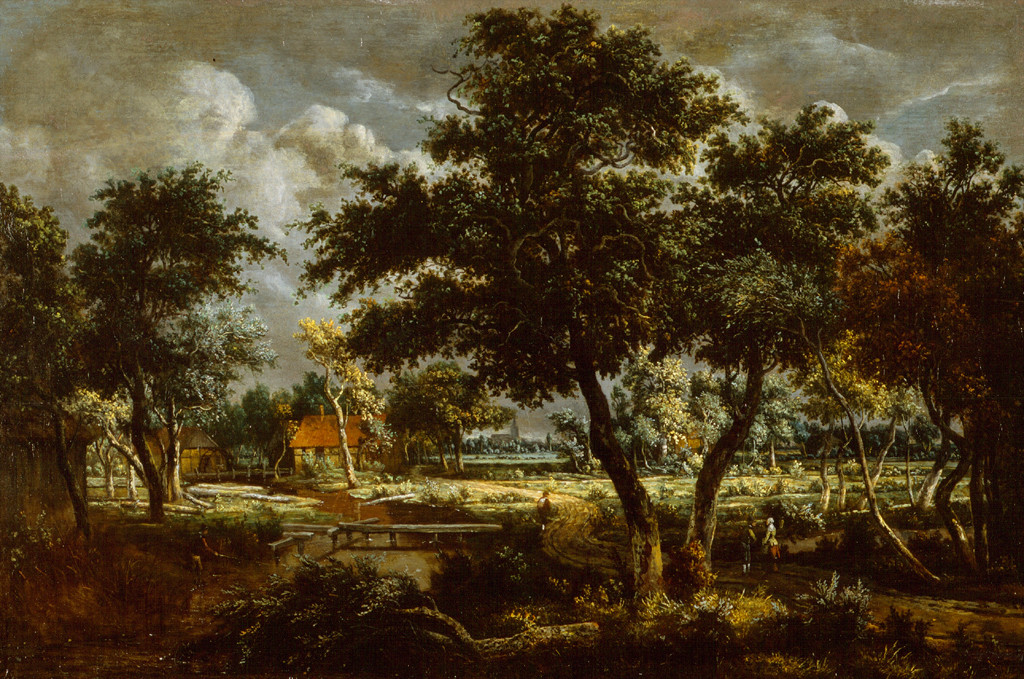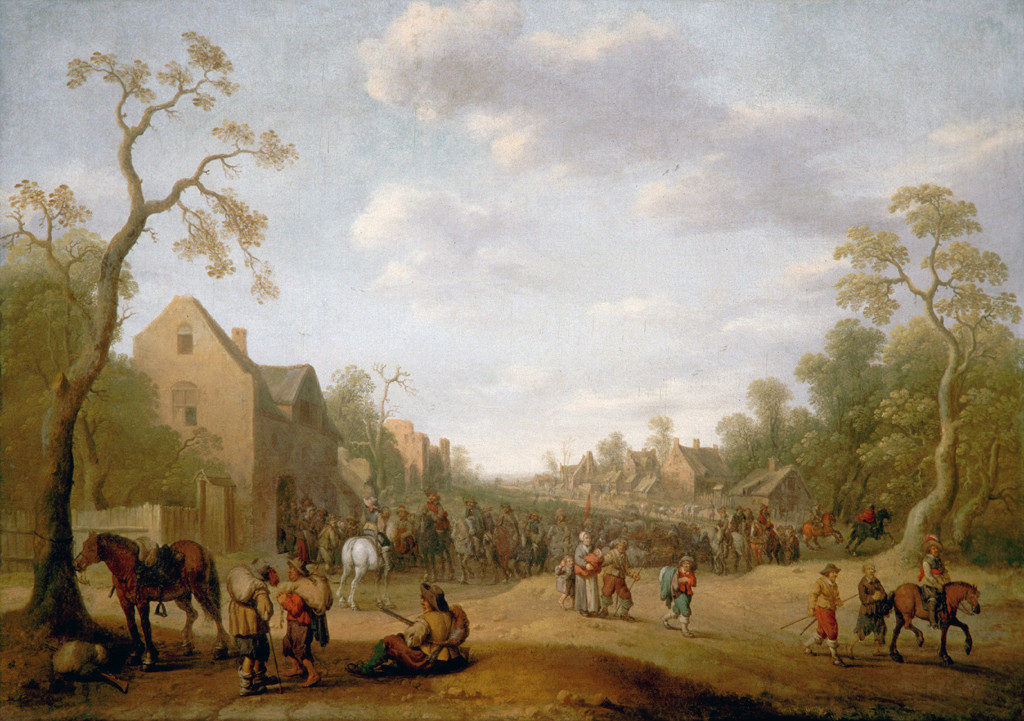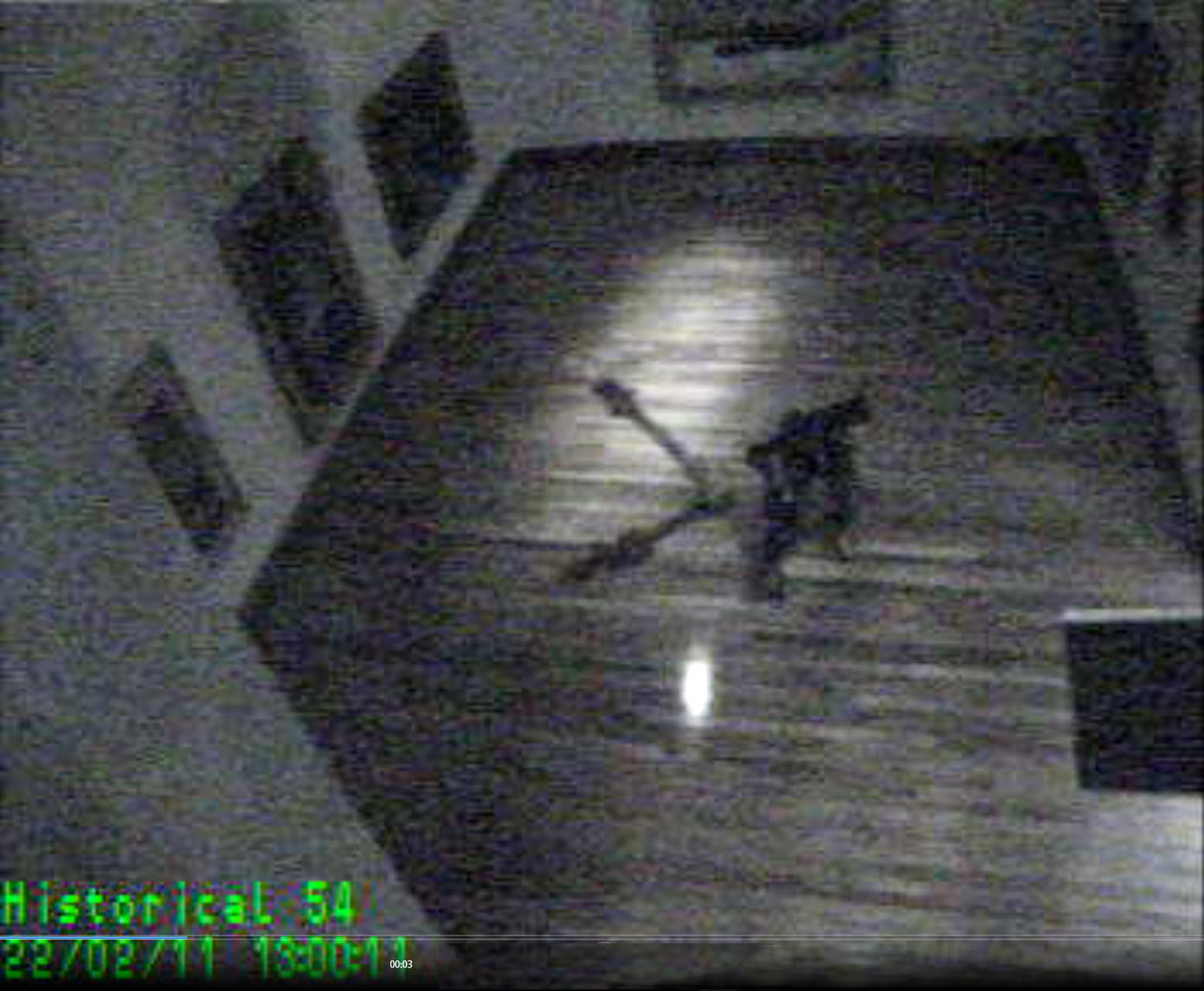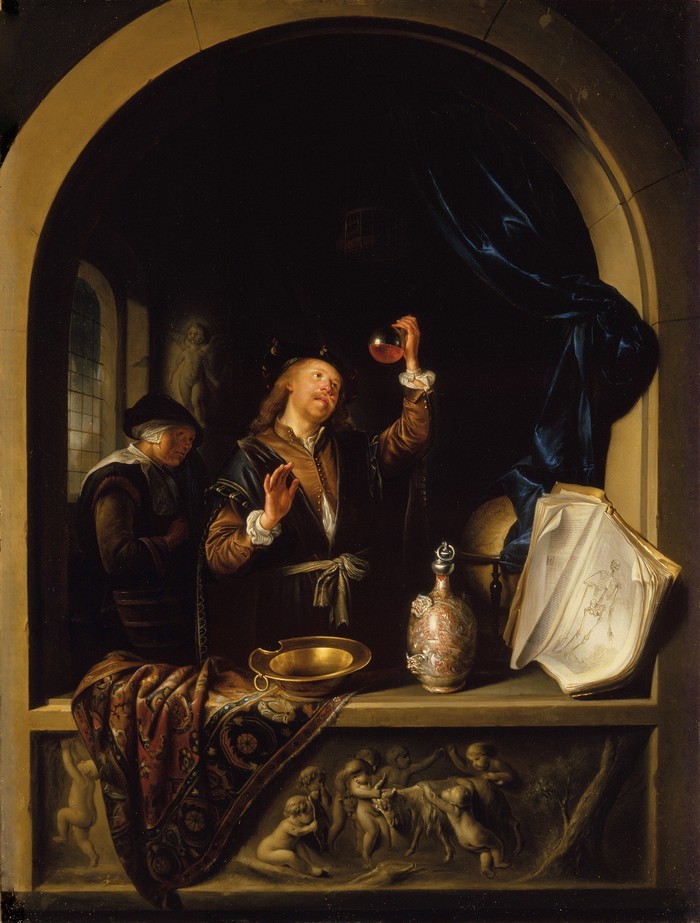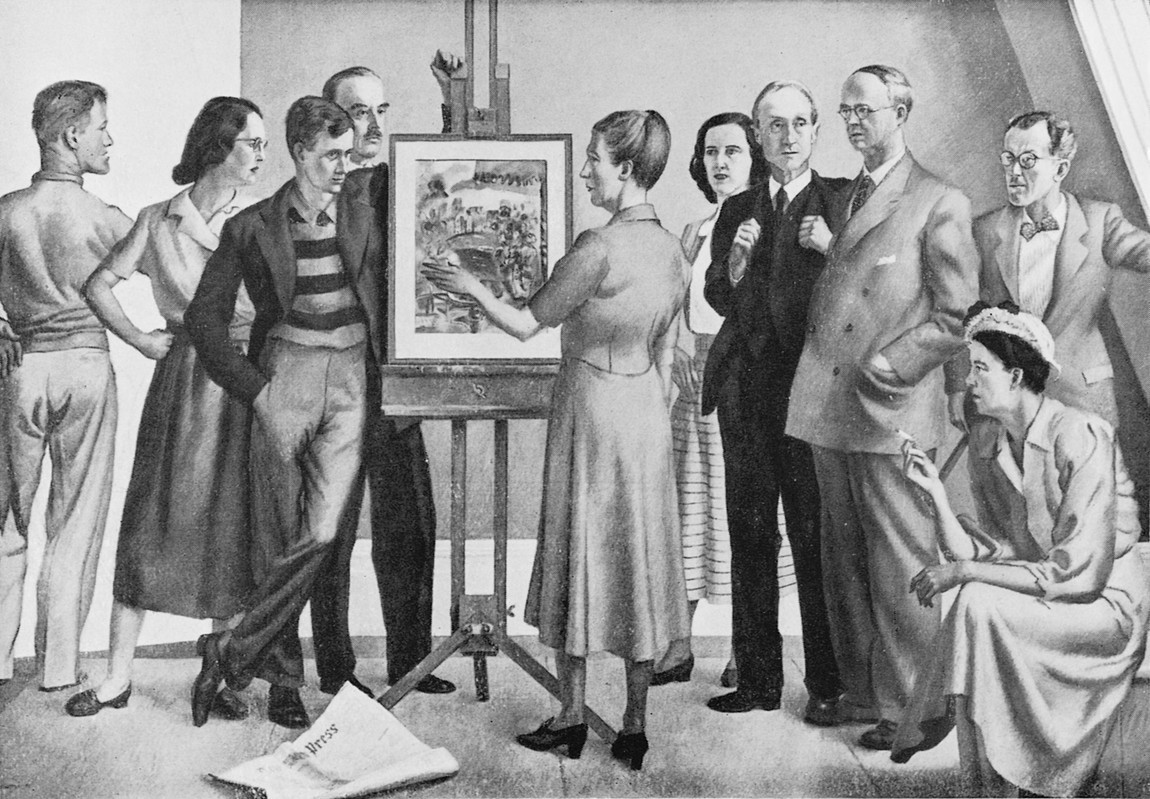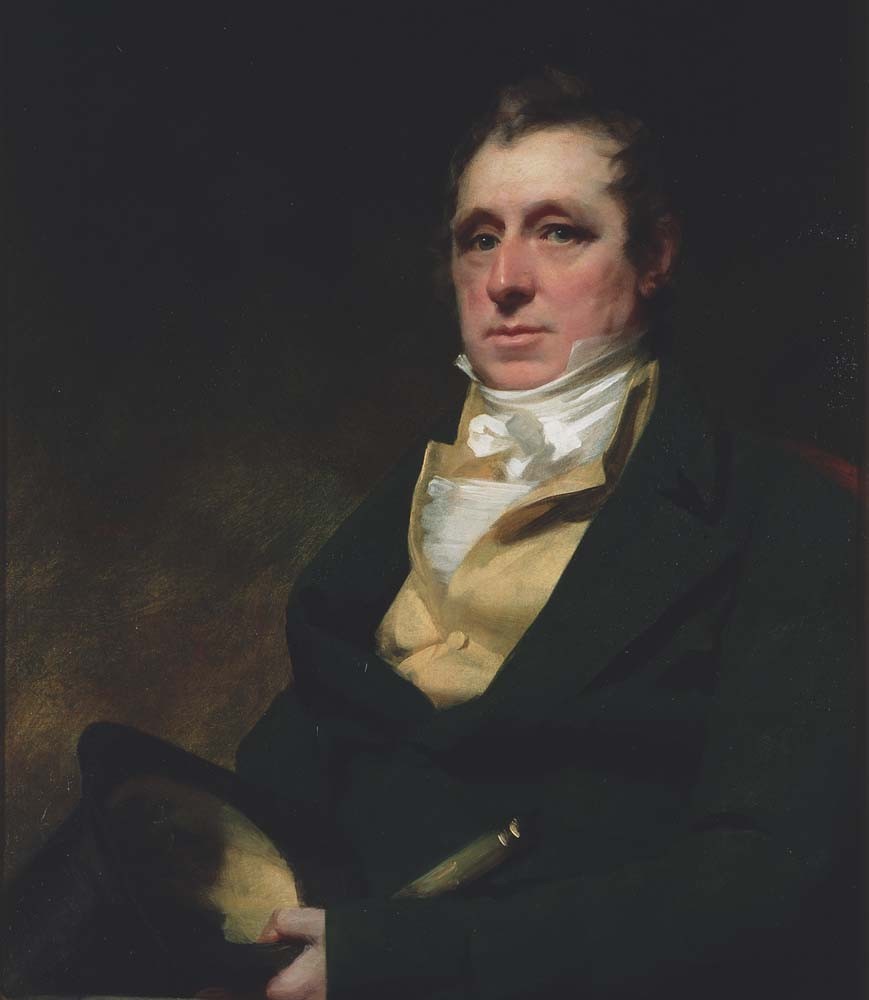Charles Frederick Goldie
Aotearoa New Zealand, b.1870, d.1947
A Hot Day: Wiremu Pātara Te Tuhi (Ngāti Mahuta)
- 1901
- Oil on canvas
- Presented by the Canterbury Society of Arts, 1932
- 765 x 690mm
- 69/79
Tags: academicism, chieftains, coats (garments), earrings (jewelry), elderly, green (color), jades (objects), jewelry, koru (pattern), Māori (culture or style), men (male humans), moko, people (agents), portraits, sleeping, spirals (geometric figures), tattoos
Read an article about Pātara Te Tuhi in The Star 18 February 1902
Exhibition History
He Waka Eke Noa, 18 February 2017 – 18 February 2018
The Ngāti Mahuta chief Pātara Te Tuhi (c. 1824–1910) was a key leader in the Kīngitanga, the Māori King movement which aimed to unify Māori under a single sovereign. He was a newspaper publisher and secretary to his cousin King Tāwhiao, travelling with him to England in 1884 to seek recognition from Queen Victoria of the 1840 Treaty of Waitangi signed on her behalf. Pātara Te Tuhi first met Charles Goldie in 1901 and became a favourite, regular model. He also became increasingly well- known throughout New Zealand through the widespread reproduction of his painted and photographic portraits. Goldie attended Pātara Te Tuhi’s tangi in 1910, where two reproductions of this portrait were prominently displayed.
Treasury: A Generous Legacy, 18 December 2015 – 27 November 2016
Pātara Te Tuhi was a leader in the Māori King Movement, including as a newspaper publisher and as secretary to his cousin King Tāwhiao; travelling with him to England in 1884 to seek Queen Victoria’s recognition of the 1840 Treaty of Waitangi signed on her behalf.
Charles Goldie was introduced to Pātara by the writer James Cowan, as were the Christchurch public when Cowan’s comprehensive biographical interview with the Tainui chief appeared in The Star in February 1902. Seven weeks later Pātara’s portrait was shown in the Canterbury Society of Arts’ annual exhibition and purchased for the collection. The portrait was presented to the city’s new gallery in 1932.
Charles Frederick Goldie painted Maori portraits for several decades. Often his subjects were depicted in passive melancholic poses. This work is among one of Goldie’s earliest Maori studies made after several years of study in Paris.
A Hot Day is one of several Goldie painted following his first sketching trip to Rotorua in 1901. The subject of the portrait is Patara Te Tuhi (1823 -1910). An elderly chief is shown, caught napping. However, such a portrayal denies the mana that Patara had among his people. Patara Te Tuhi was the son of Paratora Maioha and a decendant of Hoturoa Patara. He became private secretary to King Tawhiao and wrote for and edited the gazette of the King movement Te Hokioi.
This newspaper was printed at Ngaruawhaia during the land wars of the 1860s and was an important rallying call for Maori people to protect their land.
By 1900 Patara was a familiar identity in downtown Auckland and had gained Goldie’s acquaintance and became one of the artist’s favourite subjects and over the years a definite mutual empathy developed between Goldie and the shrewd old chief.
A Hot Day was exhibited at the Canterbury Society of Arts 1902 annual exhibition and was purchased that year for the Society’s collection. Early reproductions of this painting made it widely familiar to a whole generation of New Zealanders.
(Label date unknown)
The subject of this portrait is Patara Te Tuhi (1823- 1910). The old chief was a cousin of and became private secretary to King Tawhiao. He was also editor of the gazette of the King Movement, Te Hokioi. The newspaper campaigned strongly for Māori to protect their land.
Charles Goldie specialised in painting realistic portraits of Māori and sought out elderly subjects, particularly those wearing traditional tattoo or moko. This is one of his earliest paintings of Māori.
Born in Auckland, Goldie was the son of a prosperous timber merchant. He began exhibiting at the Auckland Society of Arts when he was 15 and still at school. He studied with the professional painter Louis J. Steele in Auckland before leaving for Paris to study at the Académie Julian. On his return to Auckland in 1898 he began to specialise in Māori portraits. In 1920 Goldie went to Sydney but alcoholism and ill health prompted his return to New Zealand in 1922.
(Label date unknown)
